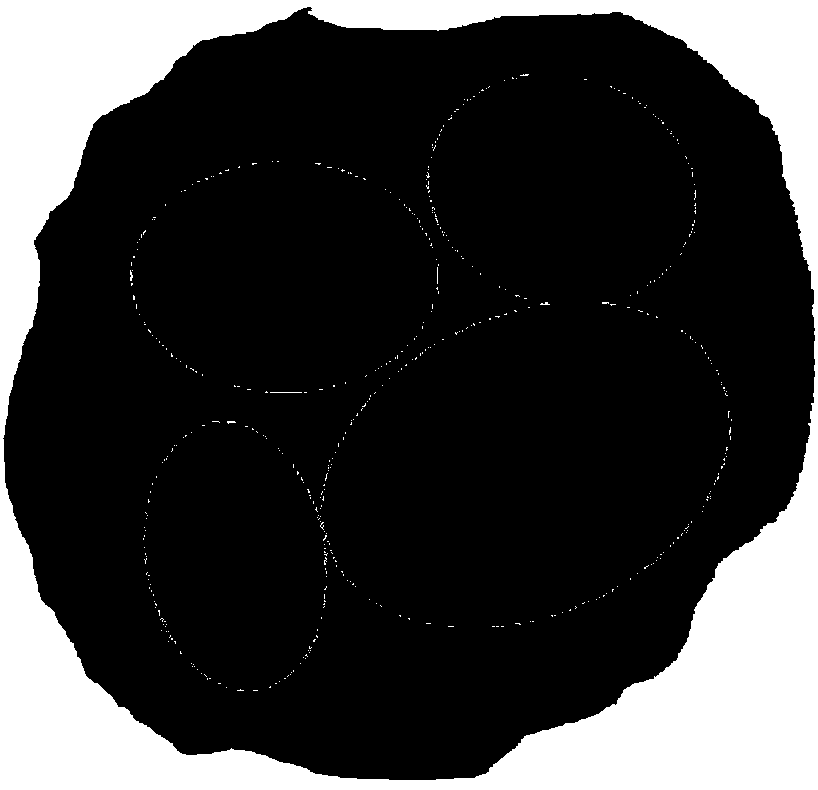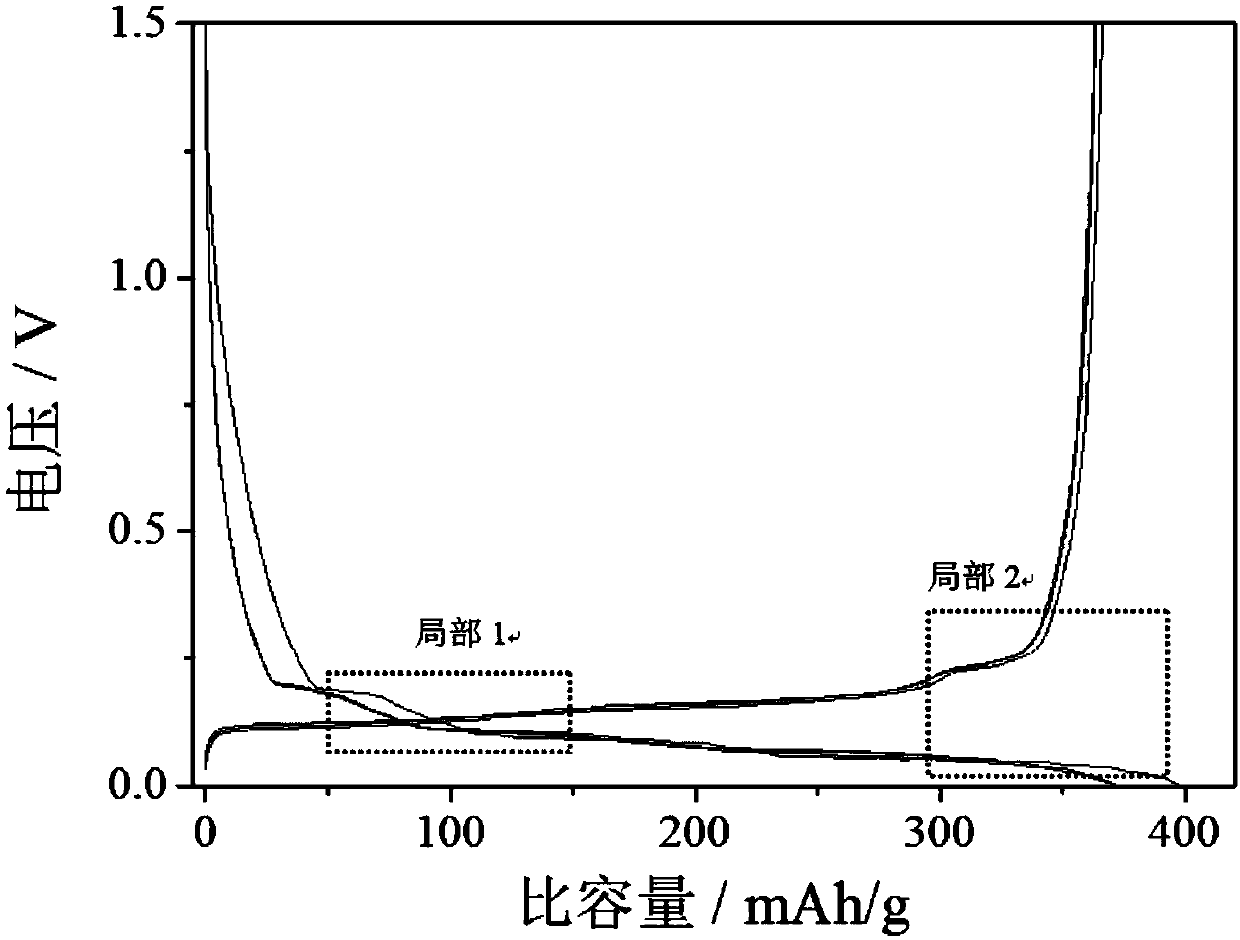Composite negative electrode material and preparation method therefor and lithium ion battery
A negative electrode material, carbonaceous material technology, applied in the direction of battery electrodes, secondary batteries, circuits, etc., can solve the problems of poor high-current charge and discharge performance, poor electrolyte compatibility, poor battery cycle stability, etc., to achieve absorption The performance of the liquid is improved, which is conducive to fast charging and the effect of improving the performance of the charge and discharge rate.
- Summary
- Abstract
- Description
- Claims
- Application Information
AI Technical Summary
Problems solved by technology
Method used
Image
Examples
Embodiment 1
[0111] (1) Put the small particle precursor (petroleum coke, 7.5% volatile content, 0.45% ash content, average particle size D501.5μm) into a V-type mixer and mix for 10 minutes to obtain a uniformly mixed small particle precursor;
[0112] Heat the binder (coal tar pitch, softening point ~ 50°C) to 60°C to obtain a molten binder;
[0113] Add the homogeneously mixed small-particle precursor and the molten binder into the kneading equipment at the same time, and knead at 50°C for 2 hours to obtain a kneaded material;
[0114] Wherein, based on the total mass of the small particle precursor and the binder in the molten state as 100%, the mass percentage of the binder in the molten state is 5%;
[0115] (2) Put the kneaded material into an Acheson graphitization furnace, carry out graphitization treatment at 2700°C under an argon atmosphere, and then carry out crushing and particle shaping in a turbo mill, so that the average particle size D50 is 11.05 μm, The sphericity S50 is...
Embodiment 2
[0126] (1) Add the small particle precursor (a mixture of petroleum coke and coal coke, volatile matter 10.2%, ash content 0.45%, average particle size D50 2.8 μm) into the tank mixer and mix for 30 minutes to obtain a uniformly mixed small particle precursor ;
[0127] Heat the binder (petroleum asphalt, softening point ~ 250°C) to 300°C to obtain a molten binder;
[0128] Add the homogeneously mixed small particle precursor and the molten state binder into the kneading equipment at the same time, and knead at 280 ° C for 1 hour to obtain the kneaded material;
[0129] Wherein, based on the total mass of the small particle precursor and the binder in the molten state as 100%, the mass percentage of the binder in the molten state is 10%;
[0130] (2) Put the kneaded material into an inner series graphitization furnace, carry out graphitization treatment at 2800° C. under a nitrogen atmosphere, and then carry out pulverization and particle shaping in an airflow vortex micro-po...
Embodiment 3
[0136] (1) Put the small particle precursor (petroleum pitch-based spherical non-graphitized product, 12.6% volatile matter, 0.30% ash content, average particle size D50 9.8 μm) into the drum mixer and mix for 60 minutes to obtain a uniformly mixed small particle precursor ;
[0137] Heat the binder (resin) to 100°C to obtain a molten binder;
[0138] Add the homogeneously mixed small-particle precursor and the molten binder into the kneading equipment at the same time, and knead at 100°C for 5 hours to obtain a kneaded material;
[0139] Wherein, based on the total mass of the small particle precursor and the binder in the molten state as 100%, the mass percentage of the binder in the molten state is 20%;
[0140] (2) Put the kneaded material into the Acheson graphitization furnace, carry out graphitization treatment at 3000°C under vacuum conditions, and then carry out crushing and particle shaping in the super cyclone vortex mill, so that the average particle size D50 is 1...
PUM
| Property | Measurement | Unit |
|---|---|---|
| Particle size | aaaaa | aaaaa |
| Average particle size | aaaaa | aaaaa |
| Specific surface area | aaaaa | aaaaa |
Abstract
Description
Claims
Application Information
 Login to View More
Login to View More - R&D
- Intellectual Property
- Life Sciences
- Materials
- Tech Scout
- Unparalleled Data Quality
- Higher Quality Content
- 60% Fewer Hallucinations
Browse by: Latest US Patents, China's latest patents, Technical Efficacy Thesaurus, Application Domain, Technology Topic, Popular Technical Reports.
© 2025 PatSnap. All rights reserved.Legal|Privacy policy|Modern Slavery Act Transparency Statement|Sitemap|About US| Contact US: help@patsnap.com



